GOP blocks Senate COVID bill, demands votes on immigration
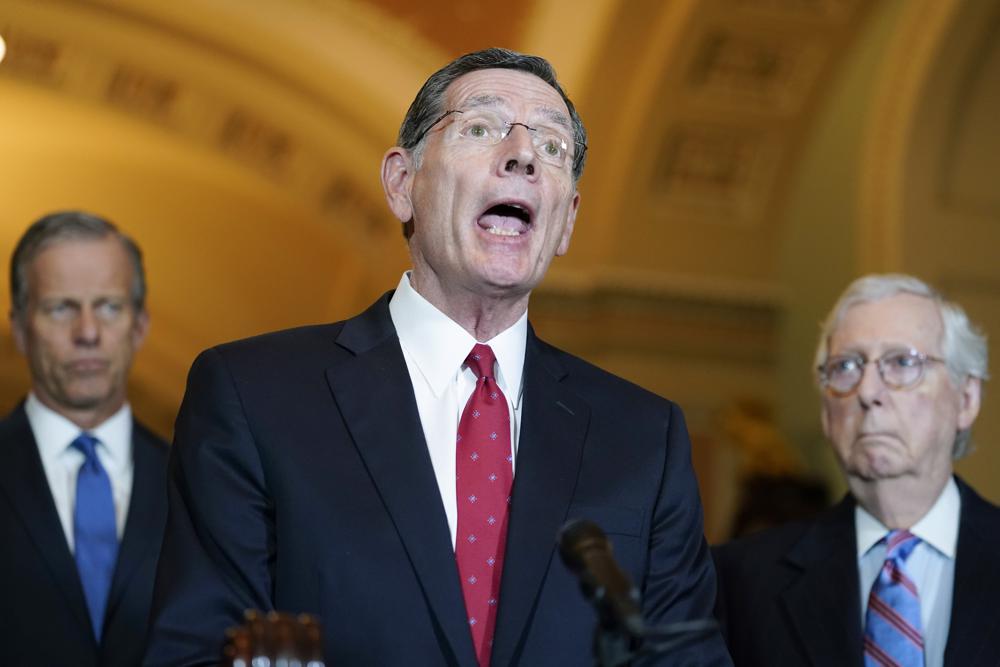
Republicans blocked a Democratic attempt Tuesday to begin Senate debate on a $10 billion COVID-19 compromise, pressing to entangle the bipartisan package with an election-year showdown over immigration restrictions that poses a politically uncomfortable fight for Democrats. A day after Democratic and GOP bargainers reached an agreement on providing the money for treatments, vaccines, and testing, a Democratic move to push the measure past a procedural hurdle failed 52-47. All 50 Republicans opposed the move, leaving Democrats 13 votes short of the 60 votes they had needed to prevail. Hours earlier, Republicans said they’d withhold crucial support for the measure unless Democrats agreed to votes on an amendment preventing President Joe Biden from lifting Trump-era curbs on migrants entering the U.S. With Biden polling poorly on his handling of immigration and Democrats divided on the issue, Republicans see a focus on migrants as a fertile line of attack. “I think there will have to be” an amendment preserving the immigration restrictions “in order to move the bill,” bolstering federal pandemic efforts, Senate Minority Leader Mitch McConnell, R-Ky., told reporters. “I don’t think there are probably 10 Republican votes at the moment for a process that doesn’t include” a vote on language retaining the immigration barriers, said No. 2 Senate GOP leader John Thune of South Dakota. At least 10 GOP votes will be needed in the 50-50 Senate for the measure to reach the 60 votes it must have for approval. Biden and Senate Majority Leader Chuck Schumer, D-N.Y., want Congress to approve the pandemic bill before lawmakers leave in days for a two-week recess. Tuesday’s vote suggested that could be hard. ”This is a potentially devastating vote for every single American who was worried about the possibility of a new variant rearing its nasty head within a few months,” Schumer said after the vote. The new omicron variant, BA.2, is expected to spark a fresh increase in U.S. COVID-19 cases. Around 980,000 Americans and over 6 million people worldwide have died from the disease. The $10 billion pandemic package is far less than the $22.5 billion Biden initially sought. It also lacks $5 billion Biden wanted to battle the pandemic overseas — money that fell victim to disagreements over GOP demands that the measure be entirely paid for with budget savings. At least half the bill would be used for research and to produce therapeutics to treat COVID-19. Money would also be used to buy vaccines and tests and to research new variants. The measure is paid for by pulling back unspent funds provided earlier for protecting aviation manufacturing jobs, assisting entertainment venues shuttered by the pandemic, and other programs. Administration officials have said the government has run out of money to finance COVID-19 testing and treatments for people without insurance, and is running low on money for boosters, free monoclonal antibody treatments, and care for people with immune system weaknesses. At the 2020 height of the pandemic, President Donald Trump imposed immigration curbs letting authorities immediately expel asylum seekers and migrants for public health reasons. The ban is set to expire May 23, triggering what, by all accounts, will be a massive increase in the number of people trying to cross the Mexican border into the U.S. That confronts Democrats with messy choices ahead of fall elections when they’re expected to struggle to retain their hair-breadth majorities in the House and Senate. Many of the party’s lawmakers and their liberal supporters want the U.S. to open its doors to more immigrants. But moderates and some Democrats confronting tight November reelections worry about lifting the restrictions and alienating centrist voters. Shortly before Tuesday’s vote, Senate Majority Leader Chuck Schumer, D-N.Y., showed no taste for exposing his party to a divisive immigration vote. “This is a bipartisan agreement that does a whole lot of important good for the American people. Vaccines, testing, therapeutics,” he said. “It should not be held hostage for an extraneous issue.” Jeff Zients, head of White House COVID-19 task force, expressed the same view about an immigration provision. “This should not be included on any funding bill,” he told reporters. “The decision should be made by the CDC. That’s where it has been, and that’s where it belongs.” But Rep. Bennie Thompson, D-Miss., chairman of the House Homeland Security Committee, said he would still support a Senate COVID-19 aid bill if it included the GOP effort to retain the Trump immigration restrictions. “Why wouldn’t I?” he said in a brief interview. The federal Centers for Disease Control and Prevention, which initiated the move two years ago, said earlier this month that it would lift the ban next month. The restrictions, known as Title 42, have been harder to justify as pandemic restrictions have eased. Trump administration officials cast the curbs as a way to keep COVID-19 from spreading further in the U.S. Democrats considered that an excuse for Trump, whose anti-immigrant rhetoric was a hallmark of his presidency, to keep migrants from entering the country. Sen. Catherine Cortez Masto, D-Nev., who faces a competitive reelection this fall, declined to say Tuesday whether she would support retaining the Trump-era ban, saying she wanted to see its language. But she said the Biden administration needs to do more. “I’ve been very clear with the administration. I need a plan; we need a plan,” she said in a brief interview. “There’s going to be a surge at the border. There should be a plan, and I’ve been calling for it all along.” Republished with the permission of the Associated Press.
Democratic, GOP Senate bargainers reach $10 billion COVID agreement

Senate bargainers reached an agreement Monday on a slimmed-down $10 billion package for countering COVID-19 with treatments, vaccines, and other steps, the top Democratic and Republican negotiators said, but the measure dropped all funding to help nations abroad combat the pandemic. The compromise drew quick support from President Joe Biden, who initially pushed for a $22.5 billion package. In a setback, he ended up settling for much less amid administration warnings that the government was running out of money to keep pace with the disease’s continued — though diminished — spread in the U.S. “Every dollar we requested is essential, and we will continue to work with Congress to get all of the funding we need,” said White House press secretary Jen Psaki. “But time is of the essence. We urge Congress to move promptly on this $10 billion package because it can begin to fund the most immediate needs.” Biden and Senate Majority Leader Chuck Schumer, D-N.Y., his party’s lead bargainer, also ended up agreeing to abandon Biden’s request to include $5 billion to help countries — especially poorer ones — where the disease is still running rampant. But the two sides could not agree on enough budget savings to pay for the larger amounts. Schumer said the pact would provide “the tools we need” to help the country recover from the economic and public health blows that COVID-19 has inflicted for the past two years. But he said while the $10 billion “is absolutely necessary, it is well short of what is truly needed to keep up safe” over time. He said members of both parties want to craft a second spending measure this spring that could include funds to battle COVID-19 and hunger overseas and more assistance for Ukraine as it continues battling the Russian invasion. The fate of such a measure is uncertain. Sen. Mitt Romney of Utah, the lead GOP bargainer, hailed the accord as one that would address “urgent COVID needs.” He also trumped the measure’s savings, which he said meant it “will not cost the American people a single additional dollar.” Romney also suggested an openness to considering future money. “While this agreement does not include funding for the U.S. global vaccination program, I am willing to explore a fiscally responsible solution to support global efforts in the weeks ahead,” he said. The agreement comes with party leaders hoping to move the legislation through Congress this week, before lawmakers leave for a two-week spring recess. It also comes with BA.2, the new omicron variant, expected to spark a fresh increase in U.S. cases. Around 980,000 Americans and over 6 million people worldwide have died from COVID-19. At least half the compromise would have to be used to research and produce therapeutics to treat the disease, according to fact sheets from Schumer and Romney. The money would also be used to buy vaccines and tests. At least $750 million would be used to research new COVID-19 variants and to expand vaccine production, the descriptions said. The deal is also a reduction from a $15 billion version that both parties’ leaders had negotiated last month. House Speaker Nancy Pelosi, D-Calif., abandoned that plan after Democratic lawmakers rejected proposed cuts in state pandemic aid to help pay for the package. Some people said the fate of the new agreement remained uncertain in the House, where Pelosi and liberal Democrats have expressed opposition to dropping the money for helping other countries. Rep. Pramila Jayapal, leader of the House Progressive Caucus, said it is “a big problem” to erase the global assistance from the package. “It’s really shortsighted to not spend money on making sure this virus is contained around the world,” Jayapal, a Washington state Democrat who worked in global public health for a decade, told reporters. The agreement will need to attract at least 10 GOP votes to move through the 50-50 Senate. The others said the needed Republican votes would be there. The measure is fully paid for by pulling back unspent funds from previous pandemic relief bills that have been enacted, bargainers have said. Romney’s fact sheet says those savings include $2.3 billion from a fund protecting aviation manufacturing jobs; $1.9 billion from money for helping entertainment venues shuttered by the pandemic; another $1.9 billion from a program that helps states extend credit to small businesses; and $1.6 billion from agriculture assistance programs. Republished with the permission of the Associated Press.
Alabama COVID-19 hospitalizations at low for pandemic
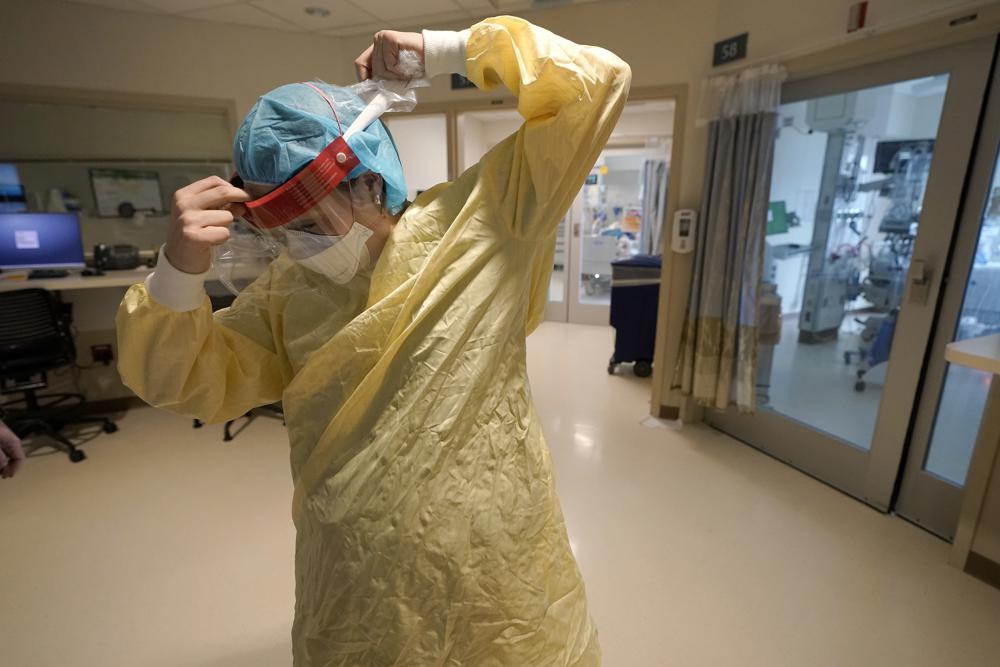
Fewer people are being treated for COVID-19 in Alabama hospitals than at any time since the beginning of the pandemic in March 2020, but experts say the rise of a new version of the coronavirus combined with fewer safety precautions might mean the decline is only temporary. Just 90 people statewide were hospitalized with the coronavirus on Friday, which was one fewer than the tally at the very start of the pandemic, statistics showed. It was far less than the highs of roughly 3,000 patients who were being treated at once when the outbreak was at its worst. Dr. Michael Saag, an infectious diseases expert at the University of Alabama at Birmingham, said the statewide trend matches what he is seeing at the hospital there. While the rise of a new omicron variant called BA-2 could cause more hospitalizations, he said, it could be that so many already have been infected in the state that the new version won’t make much of a difference. “Time will tell,” he said. The head of the Alabama Hospital Association, Dr. Donald Williamson, said he expects to see an increase in COVID-19 because of the new variant and the fact that so few people are wearing face masks and taking other precautions, but it’s impossible to determine how large the hike might be. More than 19,200 people have died of COVID-19 in Alabama, the nation’s third-highest death rate at nearly 395 fatalities for every 100,000 residents, according to researchers from Johns Hopkins University. While the rolling average number of daily new cases increased by 33% over the last two weeks, the state released a new batch of older test results that may have affected the statistics. While it’s reasonable to relax mask requirements given the overall improvement, Saag said, people at higher risk for illness likely will continue to wear them. “For the rest of the population, we can begin to get back to some semblance of ‘normal,’ with the caveat that public health officials will continue to monitor the case load,” he said in an email. “Should a new spike in cases, and especially hospitalizations, occur, we should reinstate masking recommendations.” Republished with the permission of the Associated Press.
Alabama covid cases down below 5%, first time since omicron surge

Alabama’s positivity rate for COVID tests over the last seven days fell below 5% for the first time since the start of the omicron surge, reported AL.com. According to the Alabama Department of Public Health (ADPH), Alabama’s positivity rate hasn’t been this low since before the delta surge. Data from the Covid-19 Dashboard show 4% of COVID tests performed in the state over the last seven days have come back positive, the lowest in almost nine months. Cases and hospitalizations also continue to decline. There were just over 400 COVID hospitalizations statewide as of Sunday, the lowest number since Christmas. The state has been averaging between 500 and 1,000 cases per day since late February. However, during the peak of the omicron wave, there were nearly 10,000 cases reported per day. On Twitter, the ADPH stated, “ADPH will be endorsing the new community levels recently released by @CDCgov. Our #COVID19 Data & Surveillance Dashboard will reflect these new measures soon. The dashboard will only be updated Monday-Friday instead of daily.” State Health Officer Dr. Scott Harris stated in a press release, “The solid red high-risk map indicating overall level of community transmission seen over the past 2 months in the state is now colored in the low, moderate, or substantial risk levels in a majority of counties, and the percent positivity in tests is under 10. As we enter our third year battling COVID-19, more than half of the state’s population is fully vaccinated.”
Global death toll nears 6 million as pandemic enters its 3rd year

The official global death toll from COVID-19 is on the verge of eclipsing 6 million — underscoring that the pandemic, now entering its third year, is far from over. The milestone is the latest tragic reminder of the unrelenting nature of the pandemic even as people are shedding masks, travel is resuming, and businesses are reopening around the globe. The death toll, compiled by Johns Hopkins University, stood at 5,997,994 as of Sunday afternoon. Remote Pacific islands, whose isolation had protected them for more than two years, are just now grappling with their first outbreaks and deaths, fueled by the highly contagious omicron variant. Hong Kong, which is seeing deaths soar, is testing its entire population of 7.5 million three times this month as it clings to mainland China’s “zero-COVID” strategy. As death rates remain high in Poland, Hungary, Romania, and other Eastern European countries, the region has seen more than 1 million refugees arrive from war-torn Ukraine, a country with poor vaccination coverage and high rates of cases and deaths. And despite its wealth and vaccine availability, the United States is nearing 1 million reported deaths on its own. Death rates worldwide are still highest among people unvaccinated against the virus, said Tikki Pang, a visiting professor at the National University of Singapore’s medical school and co-Chair of the Asia Pacific Immunization Coalition. “This is a disease of the unvaccinated — look what is happening in Hong Kong right now, the health system is being overwhelmed,” said Pang, the former director of research policy and cooperation with the World Health Organization. “The large majority of the deaths and the severe cases are in the unvaccinated, vulnerable segment of the population.” It took the world seven months to record its first million deaths from the virus after the pandemic began in early 2020. Four months later, another million people had died, and 1 million have died every three months since until the death toll hit 5 million at the end of October. Now it has reached 6 million — more than the populations of Berlin and Brussels combined, or the entire state of Maryland. But despite the enormity of the figure, the world undoubtedly hit its six millionth death some time ago. Poor record-keeping and testing in many parts of the world has led to an undercount in coronavirus deaths, in addition to excess deaths related to the pandemic but not from actual COVID-19 infections, like people who died from preventable causes but could not receive treatment because hospitals were full. Edouard Mathieu, head of data for the Our World in Data portal, said that — when countries’ excess mortality figures are studied — as many as nearly four times the reported death toll have likely died because of the pandemic. An analysis of excess deaths by a team at The Economist estimates that the number of COVID-19 deaths is between 14 million and 23.5 million. “Confirmed deaths represent a fraction of the true number of deaths due to COVID, mostly because of limited testing, and challenges in the attribution of the cause of death,” Mathieu told The Associated Press. “In some, mostly rich, countries that fraction is high and the official tally can be considered to be fairly accurate, but in others, it is highly underestimated.” The United States has the biggest official death toll in the world, but the numbers have been trending downward over the last month. Lonnie Bailey lost his 17-year-old nephew, Carlos Nunez Jr., who contracted COVID-19 last April — the same month Kentucky opened his age group to vaccinations. The Louisville resident said the family is still suffering, including Carlos’ younger sibling, who had to be hospitalized himself and still has lingering symptoms. The aggressive reopening of the country has been jarring for them to witness. “For us, it is hard to let our guard down; it’s going to take a while for us to adjust,” Bailey said. The world has seen more than 445 million confirmed COVID-19 cases, and new weekly cases have been declining recently in all regions except for the Western Pacific, which includes China, Japan, and South Korea, among others, the World Health Organization reported this week. Although the overall figures in the Pacific islands seeing their first outbreaks are small compared to larger countries, they are significant among their tiny populations and threaten to overwhelm fragile health care systems. “Given what we know about COVID … it’s likely to hit them for the next year or so at least,” said Katie Greenwood, head of the Red Cross Pacific delegation. Tonga reported its first outbreak after the virus arrived with international aid vessels following the January 15 eruption of a massive volcano, followed by a tsunami. It now has several hundred cases, but — with 66% of its population fully vaccinated — it has so far reported people suffering mostly mild symptoms and no deaths. The Solomon Islands saw the first outbreak in January and now has thousands of cases and more than 100 deaths. The actual death toll is likely much higher, with the capital’s hospital overwhelmed and many dying at home, Greenwood said. Only 12% of Solomon Islanders are fully vaccinated, though the outbreak has provided new impetus to the country’s vaccination campaign and 29% now have at least one shot. Global vaccine disparity continues, with only 6.95% of people in low-income countries fully vaccinated, compared to more than 73% in high-income nations, according to Our World in Data. In a good sign, at the end of last month, Africa surpassed Europe in the number of doses administered daily, but only about 12.5% of its population has received two shots. The Africa Centers for Disease Control and Prevention is still pressing for more vaccines, though it has been a challenge. Some shipments arrive with little warning for countries’ health systems and others near the expiration date — forcing doses to be destroyed. Eastern Europe has been particularly hard hit by the omicron variant, and with the Russian invasion of Ukraine, a new risk has emerged as hundreds of thousands of people flee to places like Poland on crowded trains.
Virus hospitalizations at lowest point in Alabama since 2021
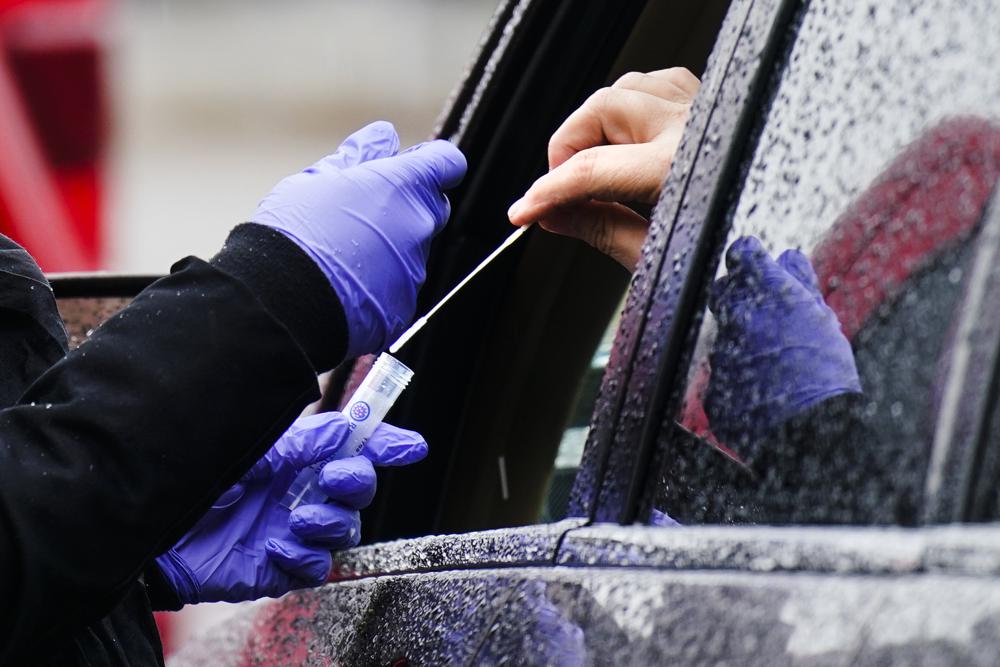
Hospitalizations for COVID-19 are at their lowest point in Alabama since late 2021 in another sign that the latest wave of illness is loosening its grip on the state. Statistics from the Alabama Department of Public Health showed that 535 people were being treated in state hospitals on Thursday, the fewest since late December when the highly contagious omicron variant was beginning to take hold. The total was down from the nearly 3,000 people who were hospitalized statewide in late January. The rolling average number of daily new cases over the last two weeks has declined by 1,089, a decrease of 55%, according to researchers at Johns Hopkins University. There were 280 new cases per 100,000 people in Alabama over the period, which ranks 25th in the country, they found. More than 18,400 people have died of COVID-19 in Alabama, giving the state the nation’s third-highest per capita death rate during the pandemic. Republished with the permission of the Associated Press.
Kay Ivey applauds decision to drop mask mandates in Alabama schools
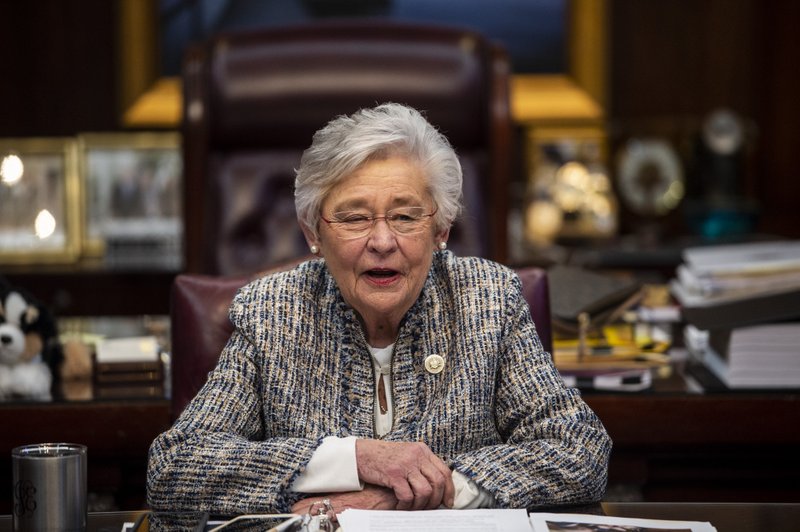
Gov. Kay Ivey has released a statement in light of schools dropping their remaining mask mandates. Ivey has drawn criticism on the issue, with many Alabamians arguing that she hasn’t been vocal enough about dropping mask mandates in schools sooner. In January, when the positivity rate for coronavirus tests exceeded 35% statewide, some state school systems returned to online learning or implemented mask restrictions to avoid classroom outbreaks. With the current omicron outbreak waning, schools are reversing mask mandates. “I applaud the Alabama schools and universities who have made the decision to end mask mandates. Given the health data we’ve seen in Alabama and across the country, I encourage all schools to continue removing these mandates — we don’t need them in Alabama,” Ivey stated. “As a former teacher, I know well that parents should be in charge of making the best decisions for their kids, not government. That’s why here in Alabama, we don’t have covid state government mandates — we sued President Biden over his mandates, and we won. I believe in the good people of our state and will always protect their freedoms.”
COVID-19 hospitalizations decline 5% across Alabama

The number of people hospitalized with COVID-19 has decreased about 5% in Alabama since last week, a potential sign of improvement in the fight against the pandemic. Statistics from the Alabama Department of Public Health showed 2,805 people were being treated for the illness on Monday, down from 2,961 last Tuesday. Hospitalizations increase or decrease daily, and some hospitals are still struggling with an influx of illness, patients in intensive care on ventilators, and staff shortages. But the percentage of people testing positive for COVID-19 dropped to a still-high 36% after exceeding 40% for nearly four weeks straight. “Things are not getting worse,” said Don Williamson, president of the Alabama Hospital Association. The entire state remains in the danger zone with high levels of community transmission, yet the improvement has some health officials hopeful amid a wave of illness linked to the highly-contagious omicron variant and Alabama’s low vaccination rate. About 49% of the state’s population is fully vaccinated, and 33% have had booster doses, according to federal statistics. Moore than 17,000 people have died from COVID-19 in the state, giving Alabama that nation’s fourth-highest death rate from the illness. Over the past two weeks, the rolling average number of daily new cases has increased by 14,114.5, or about 127%. Republished with the permission of the Associated Press.
Vaccine mandate to kick in for first wave of health workers

Health care workers in about half the states face a Thursday deadline to get their first dose of the COVID-19 vaccine under a Biden administration mandate that will be rolled out across the rest of the country in the coming weeks. While the requirement is welcomed by some, others fear it will worsen already serious staff shortages if employees quit rather than comply. And in some Republican-led states that have taken a stand against vaccine mandates, hospitals, and nursing homes could find themselves caught between conflicting state and federal demands. “We would like to see staff vaccinated. We think that it’s the safest option for residents, which is our biggest concern,” said Marjorie Moore, executive director of VOYCE, a St. Louis County, Missouri, nonprofit that works on behalf of nursing home residents. “But not having staff is also a really big concern because the neglect that happens as a result of that is severe and very scary.” The mandate affects a wide swath of the health care industry, covering doctors, nurses, technicians, aides, and even volunteers at hospitals, nursing homes, home health agencies, and other providers that participate in the federal Medicare or Medicaid programs. It comes as many places are stretched thin by the omicron surge, which is putting record numbers of people in the hospital with COVID-19 while sickening many health workers. Nationwide, about 81% of nursing home staff members already were fully vaccinated as of earlier this month, ranging from a high of 98% in Rhode Island to a low of 67% in Missouri, according to the federal Centers for Medicare & Medicaid Services. The data is unclear about the vaccination levels in hospitals and other health care sites. The mandate ultimately will cover 10.4 million health care workers at 76,000 facilities. It is taking effect first in jurisdictions that didn’t challenge the requirement in court. Those include some of the biggest states, with some of the largest populations of senior citizens, among them: California, Florida, New York, and Pennsylvania. “There absolutely have been employee resignations because of vaccination requirements,” said Catherine Barbieri, a Philadelphia attorney at Fox Rothschild who represents health care providers. But “I think it’s relatively small.” At Wilson Medical Center in rural Neodesha, Kansas, three of the roughly 180 employees are quitting, and several others have sought exemptions from the vaccine mandate, said hospital spokeswoman Janice Reese. “We are very fortunate that that is all we are losing,” she said, noting that the hospital was not in favor of the mandate. “We didn’t feel like it was our place to actually try to tell a person what they had to do.” Reese said the vaccine requirement could also make it more difficult for the hospital to fill vacancies. In Florida, medical centers find themselves caught between dueling federal and state vaccination policies. They could lose federal funding for not adhering to the Biden administration mandate but could get hit with fines for running afoul of state law. Gov. Ron DeSantis, a Republican who has waged a legal campaign against coronavirus mandates, last year signed legislation that forces businesses with vaccine requirements to let workers opt-out for medical reasons, religious beliefs, immunity from a previous infection, regular testing, or an agreement to wear protective gear. Businesses that fail to comply can be fined $10,000 to $50,000 per violation. Asked if the state would pursue fines against hospitals that enforce the federal mandate, a spokeswoman for the Florida attorney general said all employee complaints “will be thoroughly reviewed by our office.” Some states already have their own vaccine requirements for health care workers. In California, for example, they have been required to be fully vaccinated since September 30 and must get a booster by February 1. The federal mandate is “better late than never,” said Sal Rosselli, president of the National Union of Healthcare Workers, which represents about 15,000 people in California. “But if it happened sooner, we wouldn’t have gone through the surge, and a lot more people would be alive today.” The government said it will begin enforcing the first-dose vaccine requirement on February 14 in two dozen other states where injunctions were lifted when the U.S. Supreme Court upheld the mandate two weeks ago. The requirement will kick in on February 22 in Texas, which had filed suit separately. In Missouri, one nursing home served notice this week that it intends to take advantage of a state rule that allows facilities to close for up to two years if they are short-staffed because of the vaccine requirement. “Obviously, we are proponents of vaccines,” said Lisa Cox, a spokeswoman for the Missouri Department of Health and Senior Services. But “throughout all of this, we knew that mandating it would be a negative impact really on our health care system … just because of crippling staffing levels.” Cox identified the facility that was closing as Cedarcrest Manor in the eastern Missouri city of Washington. She said there are just 42 patients in the 177-bed facility amid the staffing shortages. A woman who answered the phone at the facility took a message but couldn’t immediately comment. The Centers for Medicare & Medicaid Services ultimately could cut off funding to places that fail to comply with the mandate. But it plans to begin enforcement with encouragement rather than a heavy hand. CMS guidance documents indicate it will grant leniency to places that have at least 80% compliance and an improvement plan in place, and it will seek to prod others. “The overarching goal is to get providers over that finish line and not be cutting off federal dollars,” said MaryBeth Musumeci, a Medicaid expert with the nonpartisan Kaiser Family Foundation. The states affected on Thursday are California, Colorado, Connecticut, Delaware, Florida, Hawaii, Illinois, Maine, Maryland, Massachusetts, Michigan, Minnesota, Nevada, New Jersey, New Mexico, New York, North Carolina, Oregon, Pennsylvania, Rhode Island, Tennessee, Vermont, Virginia, Washington, and Wisconsin, along with the District of Columbia and U.S. territories. Republished with the permission of the Associated Press.
Ron DeSantis blasts FDA for halting drugs ineffective on omicron

Florida Gov. Ron DeSantis pushed Tuesday for coronavirus patients to continue receiving antibody treatments deemed ineffective against the omicron variant, vowing to fight White House health regulators in his latest feud with President Joe Biden. The Republican governor’s comments came a day after the U.S. Food and Drug Administration pulled its emergency authorization for the antibody drugs from Regeneron and Eli Lilly. DeSantis, who made the drugs a centerpiece of his virus response while resisting vaccine mandates and other safety measures, did not outline how he would fight the FDA decision and it is legally unclear how he would do so. His office did not immediately return an email seeking further clarification. The FDA has sole authority over drug regulation in the U.S. The FDA announcement was expected, as both drugmakers have said for weeks that the treatments are less able to target omicron because of its mutations. In updated drug labeling released Monday, the FDA said omicron appears 1,000-fold less vulnerable to Regeneron’s drug and nearly 3,000-fold less vulnerable to Lilly’s drug. DeSantis has risen to prominence within the Republican Party through his constant criticism of Biden and White House virus policy. The governor, who is running for reelection and considered to be eyeing a 2024 presidential run, has heavily promoted the monoclonal antibody treatments. At a news conference Tuesday, DeSantis referenced anecdotal cases in which people were helped by the monoclonal antibody treatments and said it was “reckless” to block the drugs. “People have a right to access these treatments, and to revoke it on this basis is just fundamentally wrong and we’re going to fight back,” DeSantis said at a news conference. Asked about DeSantis’ opposition to the FDA decision, White House press secretary Jen Psaki said, “Let’s just take a step back here to realize how crazy this is.” “They are still advocating for treatments that don’t work,” she said of DeSantis. A spokeswoman for the U.S. Department of Health and Human Services confirmed Tuesday that the U.S. government has halted shipments of the two antibodies. She added that the federal government continues to distribute a GlaxoSmithKline antibody and two antiviral pills that are effective against omicron. However, supplies of those drugs are limited. “The Administration is focused on making sure that, if an American gets sick with COVID-19, they get a treatment that actually works,” HHS’ Kirsten Allen said in a statement. Hours after the FDA announced its decision Monday, the Florida Department of Health said it would shutter all monoclonal antibody state sites until further notice. DeSantis, in a statement Monday night, warned of the repercussions to “Biden’s medical authoritarianism.” Federal officials said the FDA decision was supported by several independent studies, including a peer-reviewed paper published in the journal Nature last month. In that study, a consortium of European researchers tested the ability of several antibody drugs to neutralize a live sample of the virus, concluding that Lilly and Regeneron’s antibodies “were inactive against omicron.” The American Medical Association, the nation’s largest physician group, said it agreed with the FDA decision, issuing a statement that read: “Limiting the use of these treatments will help ensure patients receive the best available therapy.” The federal government in late December temporarily stopped distributing the drugs to states as omicron began to become the dominant coronavirus strain but resumed shipments after complaints from Republican governors, including DeSantis. The U.S. government has shipped enough doses of the two antibodies to treat more than 300,000 patients since early January. The DeSantis administration last week announced it was opening five new monoclonal antibody treatment sites, to “facilitate the distribution of life-saving therapeutics.” The FDA says omicron is responsible for more than 99% of U.S. infections, making it “highly unlikely” that the antibodies would be effective for people seeking treatment. The drugs are not a substitute for vaccination and are generally reserved for people who are the most vulnerable, including seniors, transplant recipients, and those with conditions like heart disease and diabetes. Republished with the permission of the Associated Press.
FDA halts use of antibody drugs that don’t work vs. omicron
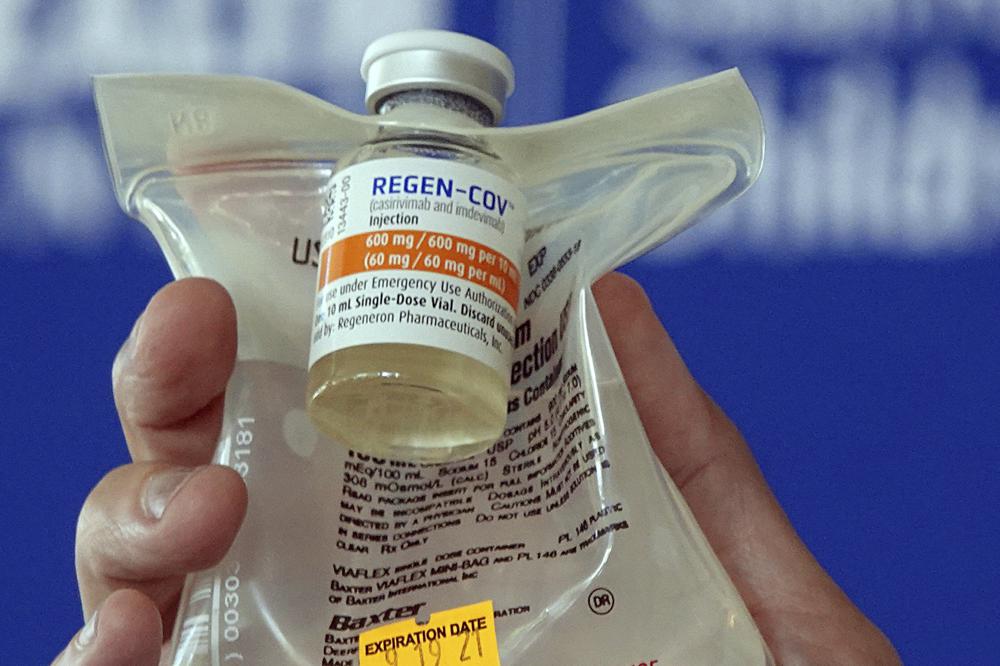
COVID-19 antibody drugs from Regeneron and Eli Lilly should no longer be used because they don’t work against the omicron variant that now accounts for nearly all U.S. infections, U.S. health regulators said Monday. The Food and Drug Administration said it was revoking emergency authorization for both drugs, which were purchased by the federal government and have been administered to millions of Americans with COVID-19. If the drugs prove effective against future variants, the FDA said it could reauthorize their use. The regulatory move was expected because both drugmakers had said the infusion drugs are less able to target omicron due to its mutations. Still, the federal action could trigger pushback from some Republican governors who have continued promoting the drugs against the advice of health experts. Omicron’s resistance to the two leading monoclonal antibody medicines has upended the treatment playbook for COVID-19 in recent weeks. Doctors have alternate therapies to battle early COVID-19 cases, including two new antiviral pills from Pfizer and Merck, but both are in short supply. An antibody-drug from GlaxoSmithKline that remains effective also is in short supply. The drugs are laboratory-made versions of virus-blocking antibodies. They are intended to head off severe disease and death by supplying concentrated doses of one or two antibodies early in an infection. Then-President Donald Trump received Regeneron’s antibody combination after he tested positive for the coronavirus in 2020. The FDA noted in its decision that omicron accounts for more than 99% of U.S. infections, making it “highly unlikely” the antibodies would help people now seeking treatment. The agency said restricting their use would also eliminate unnecessary drug side effects, including allergic reactions. The U.S. government temporarily stopped distributing the two drugs in late December, as omicron was racing across the country to become the dominant variant. But officials resumed distribution after complaints from Republican governors, including Florida’s Ron DeSantis, who claimed that the drugs continued to help some omicron patients. DeSantis has heavily promoted antibody drugs as a signature part of his administration’s COVID-19 response, setting up infusion sites and lauding them at news conferences while opposing vaccine mandates and other public health measures. Texas Gov. Greg Abbott has also launched state-sponsored infusion sites. The drugs are not a substitute for vaccination and are generally reserved for people who are the most vulnerable, including seniors, transplant recipients, and those with conditions like heart disease and diabetes. Since early January, the U.S. government has shipped enough doses of the two antibodies to treat more than 300,000 patients. Both Regeneron and Lilly previously announced they were developing new antibodies that target omicron. The move comes days after regulators broadened the use of remdesivir — the first drug approved for COVID-19 — to treat more patients. On Friday, the FDA expanded the antiviral’s approval to include adults and children with early COVID-19 who face a high risk of ending up in the hospital. Remdesivir previously had been limited to hospitalized patients. An influential panel of federal experts had already recommended using the infused drug to try to head off hospitalization. The same guidelines from the National Institutes of Health panel recommend against the continued use of Lilly and Regeneron’s antibody drugs due to their reduced effectiveness against omicron. Still, many hospitals will face challenges in ramping up remdesivir treatments. The drug requires three consecutive IV infusions over three days when used for nonhospitalized patients. That time-consuming process won’t be an option for many over-capacity hospitals facing staff shortages. The FDA made its decision based on a 560-patient study that showed a nearly 90% reduction in hospitalizations when remdesivir is given within seven days of symptoms. The study predates the omicron variant, but, like other antivirals, remdesivir is expected to maintain its performance against the latest variant. Republished with the permission of the Associated Press.
Montgomery mayor Steven Reed and state superintendent Eric Mackey positive for COVID-19
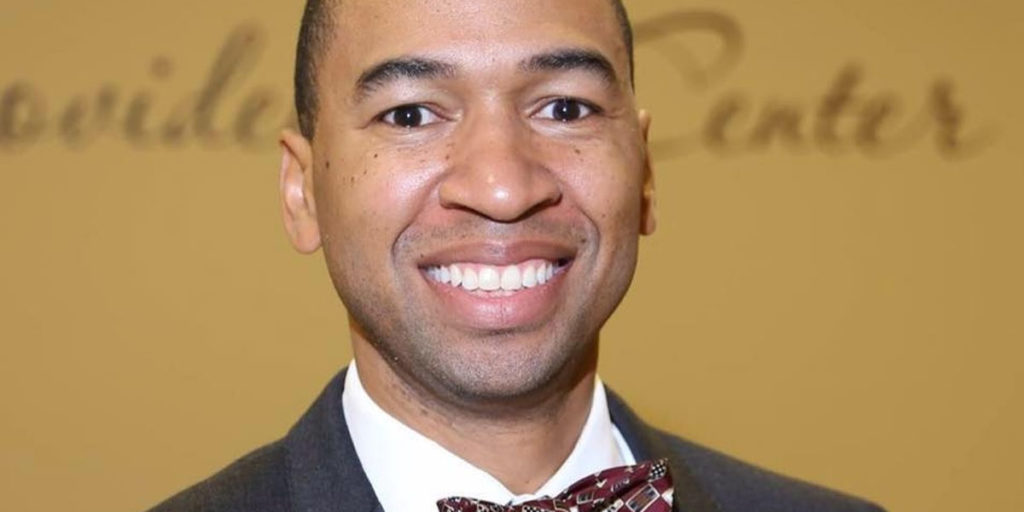
Montgomery Mayor Steven Reed said he is quarantining after testing positive for the coronavirus and developing a mild case of COVID-19. Reed sent a message on social media on Sunday saying he will be fine and encouraging others to get tested, vaccinated, and boosted. He announced the diagnosis a day earlier, saying he tested positive after returning home from a business trip despite being fully vaccinated. “I’ll be in isolation for the next week while staying engaged in city matters,” Reed said. Eric Mackey, Alabama’s state school superintendent, announced on Friday that he had tested positive for COVID-19. Mackey said he was vaccinated and had received a booster shot and was experiencing “cold-like symptoms.” State statistics show more than 2,700 patients are currently hospitalized with COVID-19. That means Alabama is nearing its all-time high for pandemic hospitalizations, 3,084 in January 2021, according to the Alabama Hospital Association. More than 16,800 people have died of COVID-19 in Alabama, giving the state the nation’s fourth-highest death rate, according to researchers at Johns Hopkins University. Republished with the permission of the Associated Press.


